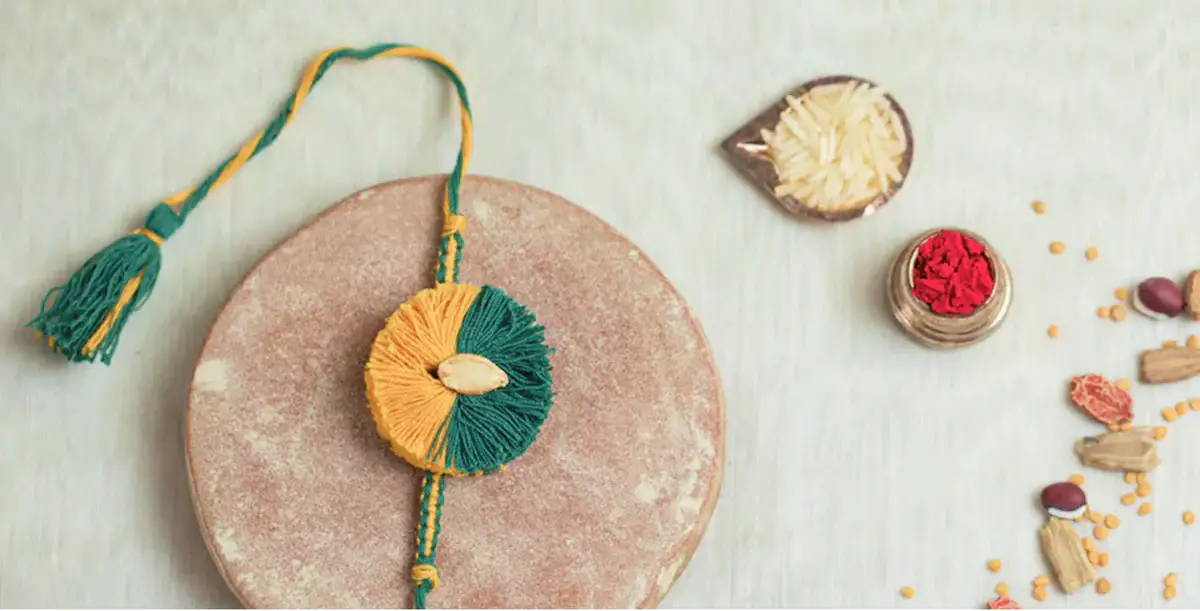Rakhi, the traditional festival celebrating the bond between siblings, is a cherished occasion in India. With growing awareness of environmental sustainability, there has been a shift towards eco-friendly celebrations. One such innovative and heartwarming idea is the plantable Rakhi. In this guide, we'll explore how you can cultivate joy with plantable Rakhis from 21 Fools, a brand dedicated to promoting eco-friendly products. We'll delve into the benefits of these unique Rakhis and provide a step-by-step guide on how to plant them.
5 Reasons to Buy Plantable Rakhis
1. Earth-Friendly Choice
Choosing plantable Rakhis is an earth-friendly decision. Traditional Rakhis often contain synthetic materials and plastic, which contribute to environmental pollution. Plantable Rakhis, on the other hand, are made from biodegradable materials embedded with seeds. After the festival, instead of discarding the Rakhi, you can plant it and watch it grow into a beautiful plant. This small act can significantly reduce waste and promote greenery.
2. Educational Experience for Children
Plantable Rakhis offer a fantastic educational opportunity for children. They learn about the life cycle of plants, the importance of caring for the environment, and the joy of nurturing a living thing. This hands-on experience can spark an early interest in gardening and environmental stewardship, making it a valuable learning tool.
3. An Eco-friendly and Nurturing Step
By choosing plantable Rakhis, you're taking a nurturing step towards a sustainable future. These Rakhis symbolize growth, care, and environmental responsibility. Every plant that grows from a Rakhi is a reminder of the special bond you share with your sibling and your commitment to a greener planet.
4. Encourages Creativity and Upcycling Designs
Plantable Rakhis encourage creativity. They can be designed in various shapes, colors, and patterns using natural dyes and materials. This not only makes them aesthetically pleasing but also inspires upcycling. Once the Rakhi is planted, the remaining materials can be composted or used creatively in other projects, fostering a culture of reuse and sustainability.
How to Plant Eco-Friendly Seed Rakhi?
Planting a seed Rakhi is a simple and rewarding process. Here’s a step-by-step guide to help you get started:
- Choose the Right Pot: Select a pot with good drainage. Ensure it’s large enough to accommodate the growing plant.
- Prepare the Soil: Fill the pot with a mixture of soil and compost. The soil should be well-draining and rich in nutrients.
- Plant the Rakhi: Place the Rakhi on the soil surface and cover it lightly with a thin layer of soil. Ensure the seeds embedded in the Rakhi are in contact with the soil.
- Watering: Water the pot gently. The soil should be moist but not waterlogged. Maintain a consistent watering schedule to keep the soil evenly moist.
- Sunlight: Place the pot in a location where it can receive adequate sunlight. Most seeds require 6-8 hours of sunlight daily to germinate and grow.
- Care and Maintenance: As the plant starts to grow, ensure it receives proper care. Water it regularly, and if necessary, add organic fertilizer to support its growth.
- Enjoy the Greenery: Watch your plantable Rakhi grow into a thriving plant. This living Rakhi will be a constant reminder of your love and the joy of nurturing life.
Conclusion
Plantable Rakhis from 21 Fools offer a beautiful blend of tradition, sustainability, and creativity. They transform the simple act of tying a Rakhi into a meaningful gesture that contributes to the environment. By choosing these best eco friendly rakhi, you’re not only celebrating the bond with your sibling but also making a positive impact on the planet. This Raksha Bandhan, cultivate joy and greenery with plantable Rakhis and take a step towards a more sustainable future.





